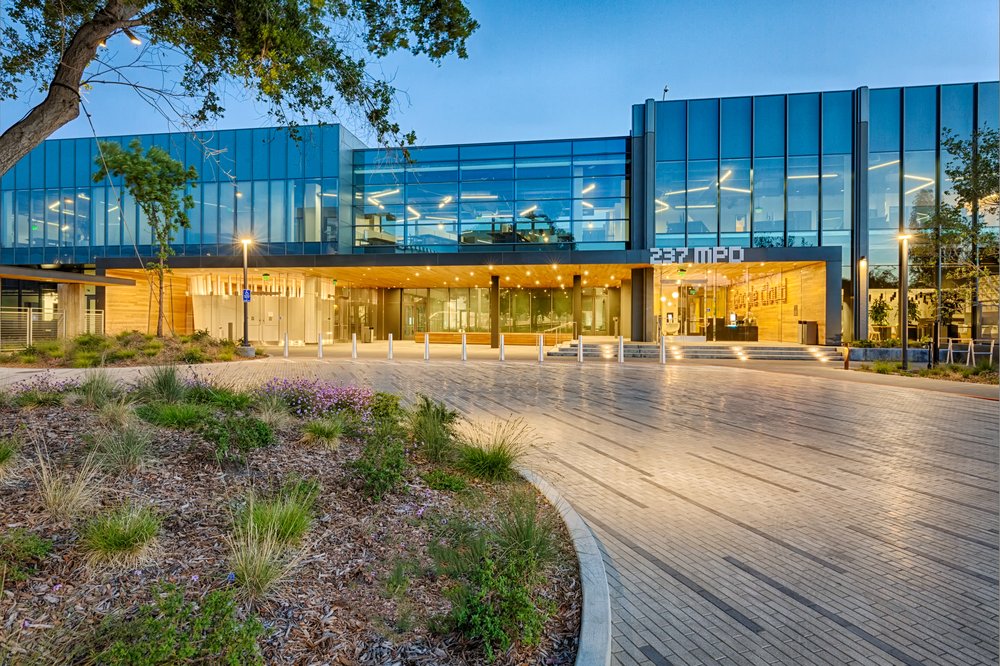Taking the Living Building Challenge to the next level
When we design and build Google offices around the world, we strive to deliver on our commitment to sustainability. This means thinking about everything from reducing and diverting waste to cultivating healthy spaces and places to accelerating carbon-free energy strategies. It also means working with industry leaders to pave a path for others and push the boundary of what’s possible. The Living Building Challenge (LBC) by the International Living Future Institute (ILFI) is one of the most ambitious green building certifications in the world. Of the largest projects ever to pursue certification through ILFI, five are Google’s workplaces — including our newest office in Sunnyvale, California.
Our collaboration with ILFI started nearly 20 years ago when we set out to combat the “new office” smell from fresh carpet and paint. As a sustainability partner for Google, this was one of my first projects: to use better materials to create the healthiest possible indoor environment. We used LBC’s Red List as a guide for what chemicals to avoid in our building products. Beyond improving the health of our indoor spaces, we also paved the way for others to purchase healthier materials. Through our purchasing power we encouraged more manufacturers to create third-party healthy material labels for their products.
Since that first project, we’ve hit more milestones with buildings across the U.S.
In 2015, we took our focus on materials to the next level with our Chicago office renovation. The 1000 West Fulton Market office renovation included 237,000 square feet of office space to build out. We expanded the reach of our Red List scope and pursued the ILFI’s LBC Materials Petal Certification. To do so, our project team reviewed every building product that was installed, procured responsibly sourced lumber, and prioritized local trade partners.
Next up was our first ground-up developments: Charleston East and Bay View in Silicon Valley. At 1.1 million square feet, Bay View is set to open this year while Charleston East, at 600,000 square feet, is nearing completion. These two buildings allowed us to work with the LBC on a scale never done before.
And finally, our newest addition to Google’s Sunnyvale campus — 237 Moffett Park Drive (237 MPD) — aspires toward a different kind of moonshot: to be the largest renovation project and the third-largest project ever certified by ILFI in the world. With this 250,000-square-foot project we are pursuing the ILFI’s LBC Materials Petal Certification, and we’ve designed the project to achieve four of the seven Petals and an LEED v4 Platinum Certification.

The exterior of Google new Sunnyvale office, 237 MPD.
The building was originally developed in the 1960’s as a research and development facility for one of the world’s first mainframe and supercomputer firms. We honored that legacy of innovation by transforming the existing building into a workplace that embodies regenerative design.
There are many subtle and intentional design features that make 237 MPD an exceptional space. The integrated design team created Oculus, a huge penetration cut through the roof and structure of the building that floods the interior with natural light and views. Materials are given a second chance throughout the building — from still-functioning components of the original mechanical systems to roughly 300 interior doors made with veneer from oak trees salvaged from the Mendocino complex fires of 2018. In total, 3,400 tons of waste (or 91 percent of total waste generated) was diverted from the landfill. Beyond the building, the grounds were designed with wet meadows in low-lying areas and native oak trees on higher ground to echo the region’s historical ecology, offer habitat for wildlife and reduce the demand for water.
237 MPD also looks to the future with innovative sustainability systems. A total of 5,000 on-site solar panels cover 91 percent of annual estimated energy demand. Helios, an interactive light sculpture, illuminates the building's Net Zero Energy goals by showing the building’s live energy data. Furthermore, captured and stored rainwater reduces potable demand for toilet flushing by 30 percent and 100 percent of irrigation demand is met by municipally-supplied recycled water. All of these design features create a workplace that is regenerative and promotes well-being, underpinned by the industry's most rigorous sustainability certification.
Our work here isn't just about pursuing certification on bigger and bigger projects, it’s also about showcasing what is possible in regenerative building today as an inspiration to drive progress. In 2020, our 6 Pancras Square office in London became the first building in the world to be awarded a Zero Carbon certification, paving the way for a partnership between Google and ILFI to plan a volume approach to certification. In alignment to our aim to run our data centers and campuses on 24/7 carbon-free energy by 2030, we're exploring how we can use the ILFI Zero Carbon certification efficiently and effectively across our real estate portfolio.
As we move forward, we’ll continue to approach our built environment as not simply a space for renovation, but also as an opportunity for regeneration.
by Lauren Sparandara via The Keyword
Comments
Post a Comment